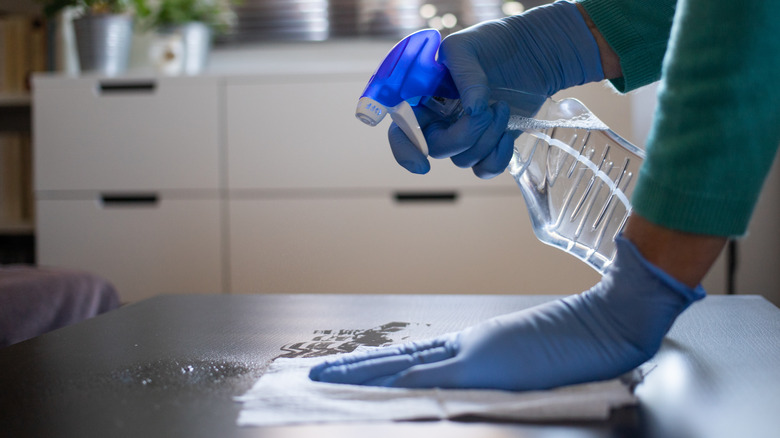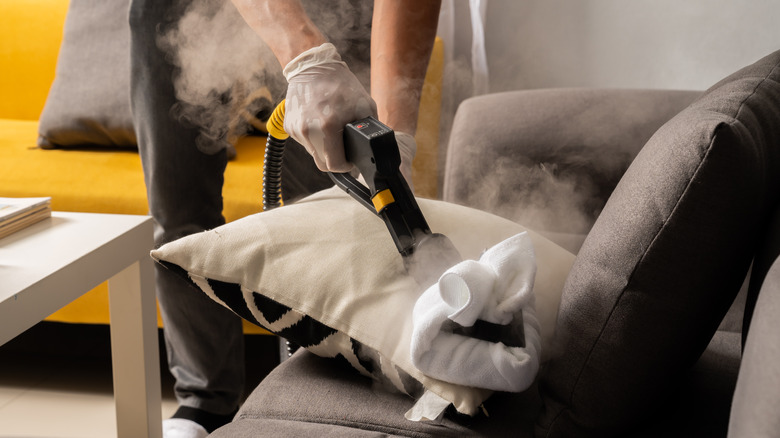How To Properly Clean That Gross Raw Meat Juice That Leaked From The Package
Cleaning up the juices from raw meat while cooking is a challenge. Proper cleaning is key to decreasing the risk of foodborne illness, and using disposable cleaning and paper products is best for avoiding cross-contamination. For instance, disinfecting wipes are a lifesaver in the home, as they eliminate dangerous germs from countertops and other surfaces. Conversely, using a sponge might spread germs to new areas of the kitchen.
For the best results, make sure the wipes you choose are registered with the Environmental Protection Agency and capable of eliminating viruses and bacteria. Many popular brands work on up to 99.9% of germs for increased peace of mind in the kitchen. After using a disinfecting wipe, remove the residual cleanser with a paper towel. You can also use a microfiber cloth instead of a paper towel. Just be sure to rinse it thoroughly and place it in your washing machine immediately after cleaning.
Products that work best for disinfecting
Reading product labels is crucial in determining whether a cleanser can eliminate germs associated with raw meats like beef and chicken. Many name-brand and generic disinfecting products are capable of removing 99.9% of germs. You should verify this by reading the product's label closely. Product labels contain other forms of crucial information as well, such as instructions on how long the cleanser must remain on a kitchen surface to eliminate hazardous germs.
You can also mix bleach and water to create a DIY disinfectant. In this case, select a bleach with a sodium hypochlorite concentration that ranges from 5% to 9%. To create the cleanser, mix one-third of a cup of bleach with a gallon of water, adjusting the ratio based on how much water you're using. After wiping down counters and other surfaces, allow the bleach to sit for at least one minute, then rinse well.
How to clean hazardous spills on fabric
While disinfecting solid surfaces is relatively straightforward, raw meat juice on fabric and upholstery is a lot more complicated. Fortunately, there are lots of disinfecting sprays that can be used on soft surfaces like sofas, backpacks, and other items. While the spray you choose will have instructions, start by sopping up any excess liquid with paper towels, which should be discarded immediately. Next, spray the disinfectant on the affected area for at least four seconds. With soft surfaces, allow the disinfectant to sit for about ten minutes, then let the area dry naturally.
Steam cleaners are also effective for sanitizing carpets and upholstery. Steam cleaners send water vapor deep into soft materials, which can break up microscopic dirt and grime. Since these devices are capable of reaching high temperatures, the steam produced is beneficial for eliminating bacteria and other germs. With these smart cleaning tips, you can safeguard your home against all sorts of foodborne pathogens.


